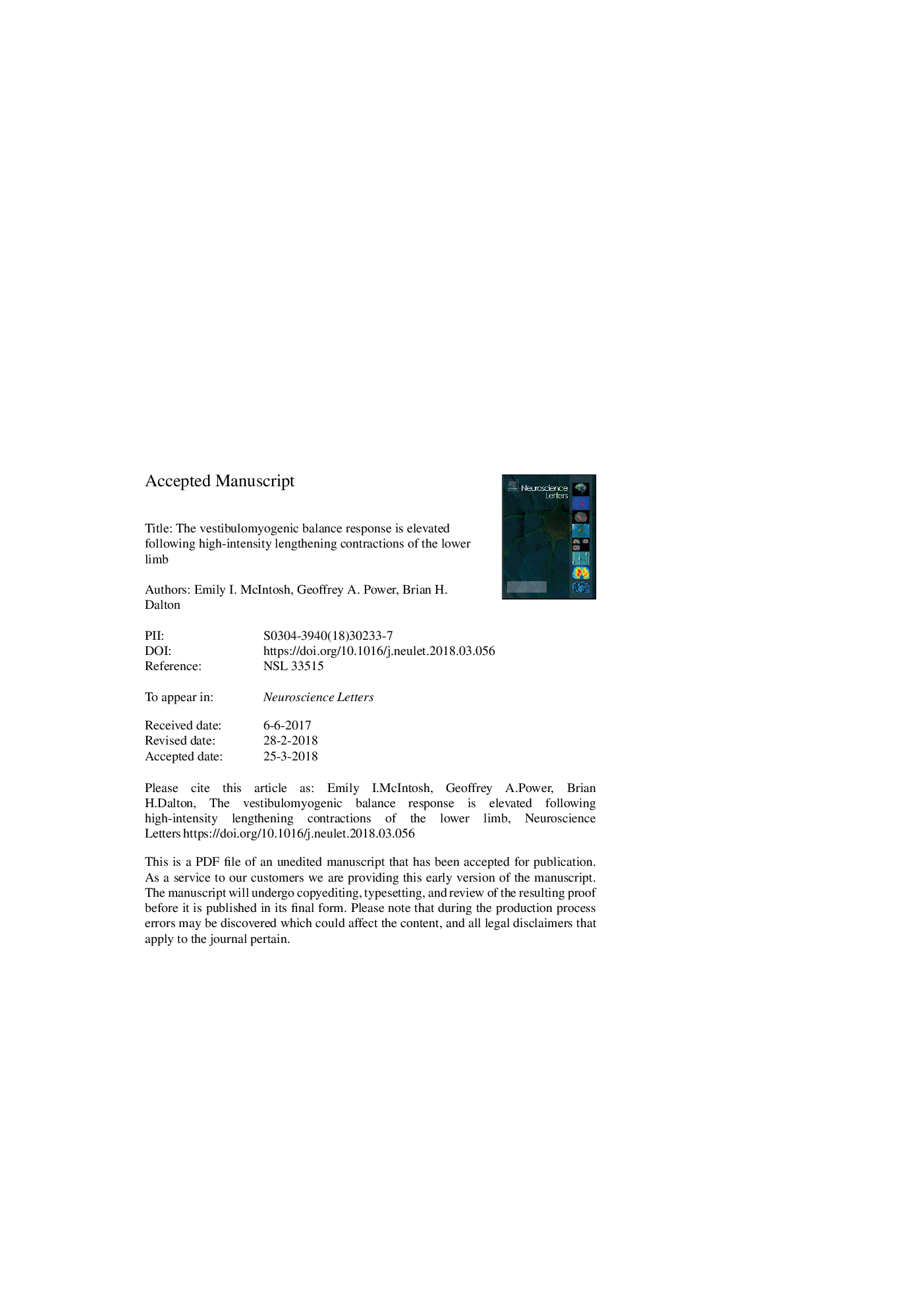| Article ID | Journal | Published Year | Pages | File Type |
|---|---|---|---|---|
| 8841541 | Neuroscience Letters | 2018 | 24 Pages |
Abstract
The purpose was to investigate whether exercise-induced muscle weakness of the plantar and dorsiflexors through high-intensity lengthening contractions increases the vestibulomyogenic balance response. Nine males (â¼25 years) participated in three experimental testing days to evaluate the vestibular control of standing balance and neuromuscular function of the plantar and dorsiflexors pre- and post (30â¯min, and 1 and 7â¯days) high-intensity lengthening plantar and dorsiflexions. To evaluate the vestibular-evoked balance response, participants stood quietly on a force plate while exposed to continuous, random electrical vestibular stimulation (EVS) for two 90-s trials. Relationships between EVS-antero-posterior (AP) forces and EVS-medial gastrocnemius electromyography (EMG) were estimated in the frequency domain (i.e., coherence). Weakness of the right plantar and dorsiflexors were assessed using maximal voluntary contraction (MVC) torque. The lengthening contractions induced a 13 and 24% reduction in plantar and dorsiflexor MVC torque, respectively (pâ¯<â¯0.05) of the exercised leg, which did not recover by 1â¯day post. The EVS-EMG coherence increased over a range of frequencies up to 7â¯days post compared to pre-lengthening contractions. Conversely, EVS-AP forces coherence exhibited limited changes. The greater EVS-EMG coherence post exercise-induced muscle weakness may be a compensatory mechanism to maintain the whole-body vestibular-evoked balance response when muscle strength is reduced.
Related Topics
Life Sciences
Neuroscience
Neuroscience (General)
Authors
Emily I. McIntosh, Geoffrey A. Power, Brian H. Dalton,
